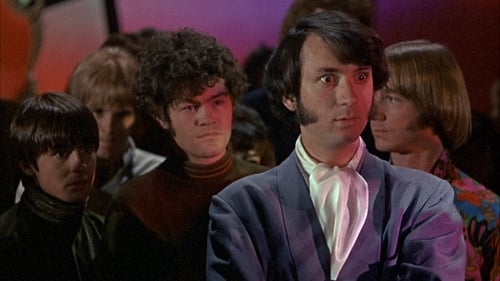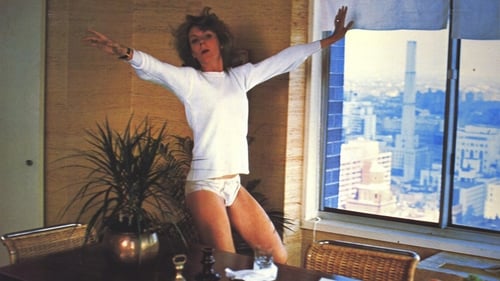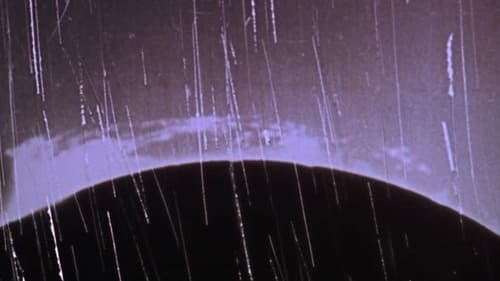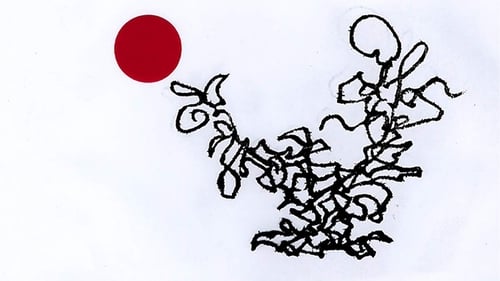Colored Rhythm: Study for the Film (1913)
Gênero : Animação
Runtime : 0M
Director : Léopold Survage
Sinopse
A film unmade-- That is, Survage's film was never realized in the traditional sense-- At the time, such a project was beyond technological possibility. His pioneering efforts to combine luminous, expressive painting and the moving picture were further curtailed by the outbreak of WWI. Some have taken it upon themselves to 'animate' his watercolor plates in attempts to set his dream into motion.

In this surrealistic and free-form follow-up to the Monkees' television show, the band frolic their way through a series of musical set pieces and vignettes containing humor and anti-establishment social commentary.

A primeira parte apresenta a dor conseqüente à perda de uma melancia muito valiosa, seu dentista e transporte para o céu. Em seguida segue uma exposição elaborada da terra celestial, em termos de Israel e de Montreal. A segunda parte descreve o retorno à Terra.

Mulher de classe média alta de Nova Iorque precisa se adaptar a sua nova realidade após o fim do seu casamento de mais de 16 anos.

We watch white shapes dancing on black background, which changes when the white shape fills up the screen completely, and black lines and figures bounce around on the now white background.

A live action footage of a smiling, bespectacled (presumably) Western tourist set against the familiar cadence of an accelerating train revving up as it leaves the station sets the mesmerizing tone for the film's abstract panoramic survey of an Ozu-esque Japanese landscape of electrical power lines, passing trains, railroad tracks, and the gentle slope of obliquely peaked, uniform rooflines as Breer distills the essential geometry of Mount Fuji into a collage of acute angles and converging (and bifurcating) lines .

The film tells a story of Mariana, a nurse who leaves Lisbon to accompany an immigrant worker in a comatose sleep on his trip home to Cape Verde. The devoted Portuguese nurse took a journey only to find herself lost in abstract drama.

A tale about a kid, a samurai mime, and a stripper who all try to defeat a warlord and an evil clown who have successfully turned a countryside into a never ending nightmare filled with horrible monsters.

Iniciado em 1958 e concluído em 1979, Len Lye criou este curta animado em preto e branco desenhando diretamente no rolo de filme. As “figuras em movimento” resultantes dançam ao som da música da tribo africana Baguirmi.

A creation myth realized in light, patterns, images superimposed, rapid cutting, and silence. A black screen, then streaks of light, then an explosion of color and squiggles and happenstance. Next, images of small circles emerge then of the Sun. Images of our Earth appear, woods, a part of a body, a nude woman perhaps giving birth. Imagery evokes movement across time. Part of the Dog Star Man series of experimental films.

Suggestion is the rock, and the physical evidence is the evanescent spray that breaks against the unseen. Transitive enharmonics of things touching in middair, an air which is Time—not an actual intersection, but with a consequence as powerful as predestination, a momentary fulfillment, a trail beyond mere pattern, like a streak of truth alive and uncontained, like something that runs through infinity slowing to leave condensation, sonority, a temperature. Lines crossing lines. Not there. There. Invisibilities smudging. Gesture and impression, optic suggestions, agents on and in the mind. Each with vibrations, dollops, whispers, throbs, particles and waves. A finger of pigment brushing a lip of language exchanging carriage supports, liquidities, fire. Moire of meanings. Micro settings in the heart. The time it takes. The very least one can say is to say The Extravagant Shadows is a major work. Humanly essential, adventurous and necessary.

Man's rebellion against the world of the digits.

Early Abstractions is a collection of seven short animated films created by Harry Everett Smith between 1939 and 1956. Each film is between two and six minutes long, and is named according to the chronological order in which it was made. The collection includes Numbers 1–5, 7, and 10, while the missing Numbers 6, 8, and 9 are presumed to have been lost.

Animation using cutout animation to craft a bizarre science fiction experiment. Moving spheres, such as balloons and bubbles, are superimposed on static backgrounds to suggest travel and discovery.

Here the artist creates a world of color, form, movement and sound in which the elements are in a state of controllable flux, the two materials (visual and aural) are subject to any conceivable interrelation and modification.

100 basic images switching positions for 4000 frames.

This film, photographed in London, is an exploration into the depths of unconscious reactions.

A cartoon detailing the unrequited love that the line has for the dot, and the heartbreak that results due to the dot's feelings for the lively squiggle.

Utilising an apparently new-found obsession with the colour red and reinvigorating some of the circular imagery of A Man and His Dog Out for Air and 69, Breer delves into the very basis of animation to explore how a variety of easily recognisable objects can be portrayed and manipulated differently using pixillation and classically drawn animation. -Malcolm Turner

Short experimental animation.

In 1944 Lye moved to New York City, initially to direct for the documentary newsreel The March of Time. He settled in the West Village, where he mixed with artists who later became the Abstract Expressionists, encouraged New York’s emerging filmmakers such as Francis Lee, taught with Hans Richter, and assisted Ian Hugo on Bells of Atlantis. Color Cry was based on a development of the “rayogram” or “shadow cast” process, using fabrics as stencils, with the images synchronized to a haunting blues song by Sonny Terry, which Lye imagined to be the anguished cry of a runaway slave. —Harvard Film Archive










